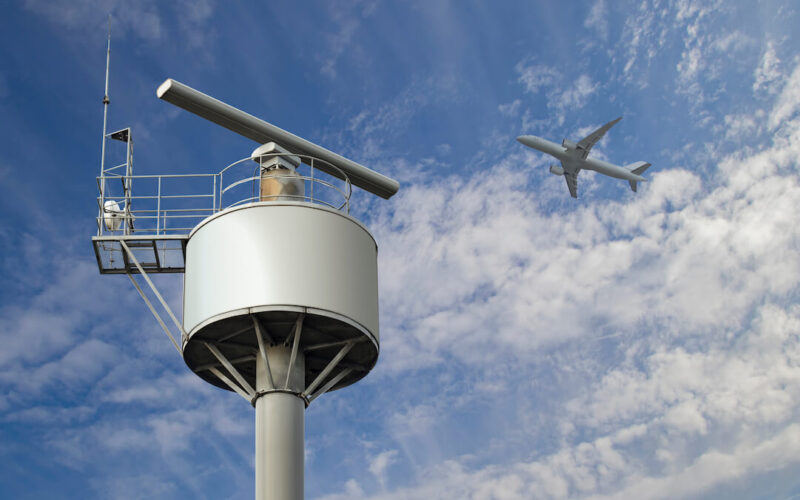US telecommunications companies AT&T and Verizon have rejected the Federal Aviation Administration’s (FAA) request to further delay the launch of new 5G networks in the country.
In a letter dated December 31, 2021, Secretary of Transportation Pete Buttigieg and FAA Administrator Steve Dickson wrote to AT&T CEO John Stankey and Verizon CEO Hans Vestburg, asking them to delay the launch of commercial services for a further two-week period beyond January 5, 2022. The companies had already delayed the rollout by one month to January 5, 2022.
The FAA is concerned that the signals from the new 5G services could interfere with crucial aircraft equipment that planes use when they are coming in to land. It said that a further delay would allow more time for exclusion zones around airports to be identified and mitigating measures to be communicated to airlines.
However, on January 2, 2022, Brendan Carr, commissioner of the Federal Communications Commission (FCC), the organization that gave AT&T and Verizon the license and authorization to deliver the new 5G networks in the country, replied to the FAA’s request.
Carr denied the FAA’s request to delay the 5G rollout, noting that, “Your request for delay is not backed up by science, engineering or law,” Carr further stated that the FAA’s claim that there are unresolved concerns about harmful interference from C-Band operations on aircraft radio altimeters is not correct.
As a solution, AT&T CEO John Stankey and Verizon CEO Hans Vestberg suggested that instead of delaying the 5G deployment, the telecommunication companies would adopt the same C-band radio exclusion zones already in place in France near runways at certain airports.
“France provides a real-world example of an operating environment where 5G and aviation safety already co-exist,” the companies’ CEOs wrote in its response letter to the FAA.
“If US airlines are permitted to operate flights every day in France, then the same operating conditions should allow them to do so in the United States.”
Nearly 40 countries have turned on 5G over C-Band spectrum.
— Brendan Carr (@BrendanCarrFCC) January 1, 2022
Yet the Biden Administration is working to needlessly delay C-Band operations here.
That would only undermine America’s 5G leadership and the mid-band work we accomplished over the past few years.
My response to DOT: pic.twitter.com/pVhUTyOd9m
The FAA told local media that it is still currently reviewing the letters and proposal.
In Europe, 5G networks use the 3.6 GHz frequency band. Globally, aircraft radio altimeters use the 4.2-4.4 GHz band. The new 5G networks in the US will use the 3.7-3.98 GHz band. Because of how close the band is to the one currently being used by aircraft radio altimeters, the fear is that 5G signals could interfere with the signals being sent to radio altimeters. Aircraft use radio altimeters as they are coming into land to provide them with their height above the ground, crucial when weather is poor and visibility is bad.
The European Union Aviation Safety Agency (EASA) noted the concerns over the 5G rollout in the United States in a Safety Information Bulletin (SIB) issued on December 16, 2021.
In the SIB, EASA says that it has assessed the risk of radio interference in European airspace from 5G networks. “At this stage, no risk of unsafe interference has been identified in Europe,” the agency said.
However, it acknowledged the FAA’s assessment of risks but noted these were specific to the US due to the greater power emissions from the 5G ground stations due to be installed there in early 2022.
Still, EASA has recommended European airlines include unreliable radio altimeter scenarios in simulator training and report any unusual radio altimeter behavior.
The FAA and DoT letter of December 31, 2021 stated that if a solution has not been suggested by January 5, 2021, the US aviation sector will be forced to “take steps to protect the safety of the traveling public, particularly during periods of low visibility or inclement weather.” Though the FAA did not specify what steps these are, it said that it will result in widespread disruption as planes divert to other cities or flights are canceled, causing ripple effects throughout the U.S. air transportation system.
The FAA had previously issued airworthiness directives in the first week of December 2021 to avoid the possible effects of 5G on safety equipment. The directive forbade pilots from using auto-landing and other certain flight systems at low altitudes where 5G wireless signals could interfere with onboard instruments that measure a plane’s distance to the ground.

